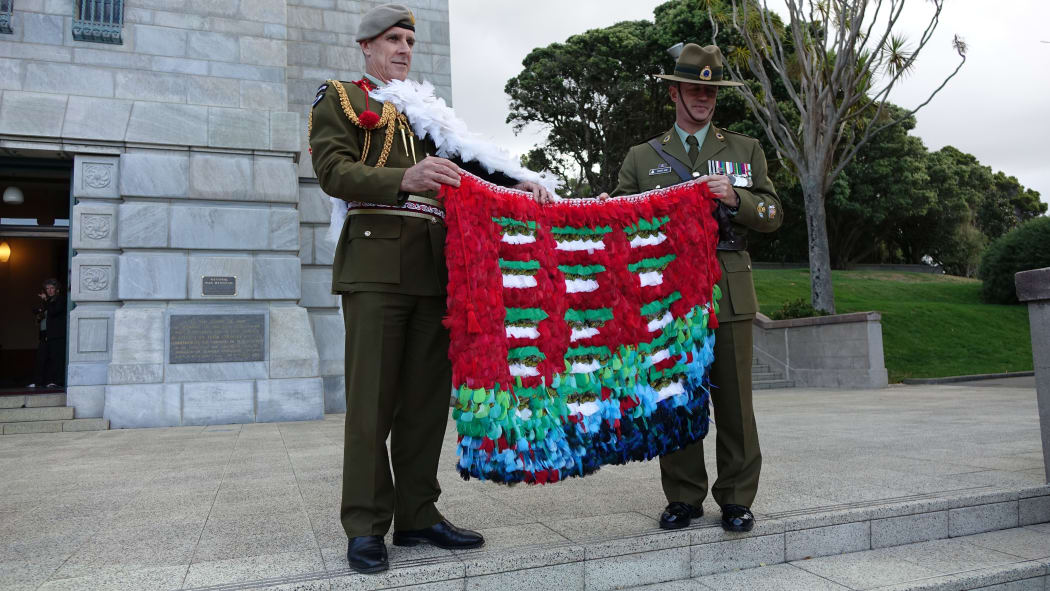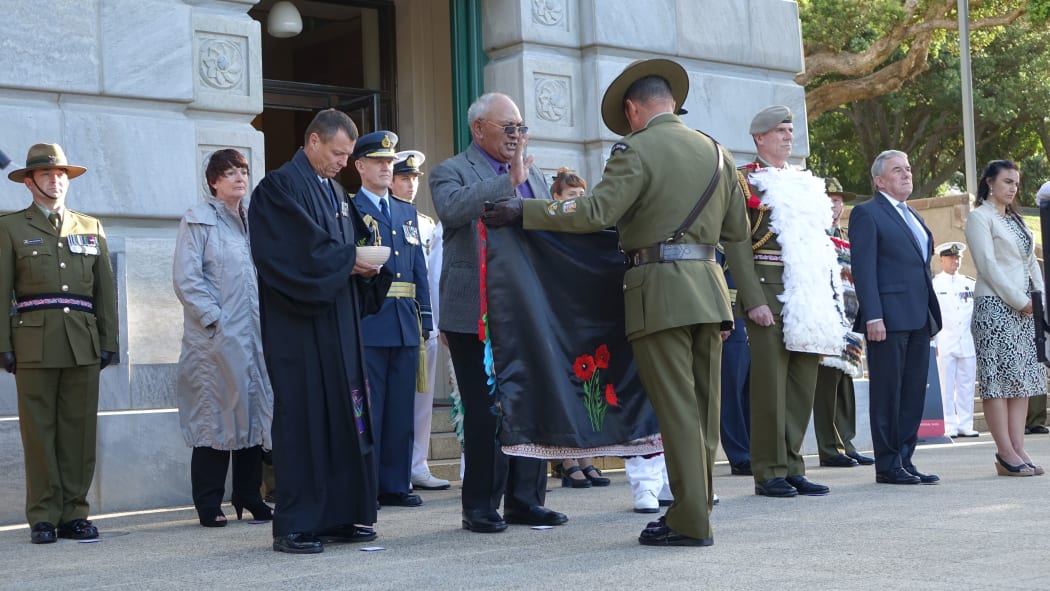Traditional Maori weavers are questioning the authenticity of the Defence Force's new feather cloak.
Since the colourful cloak was presented to the Chief of Defence, Lieutenant General Tim Keating, in a ceremony at the National War Memorial several weavers have contacted RNZ News saying it is not authentic.

Chief of Defence Force Lieutenant General Tim Keating, left, and the cloak's weaver Warrant Officer First Class Robert Jobe at last week's ceremony. Photo: RNZ / Kate Pereyra Garcia
Maori textiles conservator Rangi Te Kanawa said it was not a kahu huruhuru, as the Defence Force had called it, because it was not made with muka (flax fibre) or native feathers.
"Now I'm not damning the actual cloak itself, or the person who, made it but its representation is not correct. I think it's a symbol of a Maori cloak, but it's not a true representation."
Ms Te Kanawa said misrepresentation was happening more often and was hurtful to traditional weavers.
Traditional weaving was a long and complicated process that began with harvesting the flax fibre, she said.
Weaver Veranoa Hetet agreed and said she found the Defence Force claim belittling.
"That was called a kahu huruhuru, I find that offensive, just as a general or a major would find it offensive if I called him private."
It would have been better to call it a cape or a cloak, she said.

The cloak is presented for a blessing. Photo: RNZ / Kate Pereyra Garcia
Christina Wirihana, chair of national weavers organisation Te Roopu Whatu o Aotearoa said the weavers' concerns were valid.
"I'm not saying that it's not made properly - it's just the use of the word and to have that clarity."
The cloak features red feathers woven among white to symbolise the fallen soldiers on Turkish battlefields, blue feathers to represent the oceans crossed by soldiers, and peacock green feathers which are the grass surrounding orderly graves in Gallipoli. The weaver, Warrant Officer First Class Robert Jobe, travelled to Gallipoli as part of his preparations.
Maori Arts and Craft Institute director Karl Johnstone said art, culture and language were dynamic and changed over time, and new terminology was needed to differentiate between the old and new.
"It's obviously really important to embrace new materials... I think it's really important to continue to innovate, but at the same time things aren't taken out of context."
It was universal for there to be a tension between new and old, he said.
The Defence Force declined to comment. At the presentation last week, Mr Keating said the cloak was an extension of the bi-culturalism of the Defence Force.


